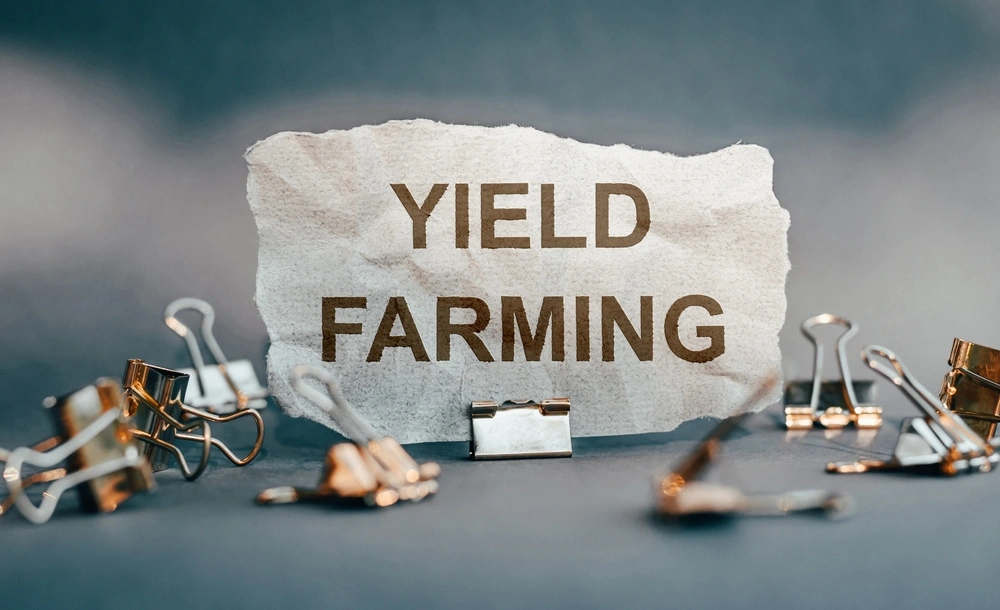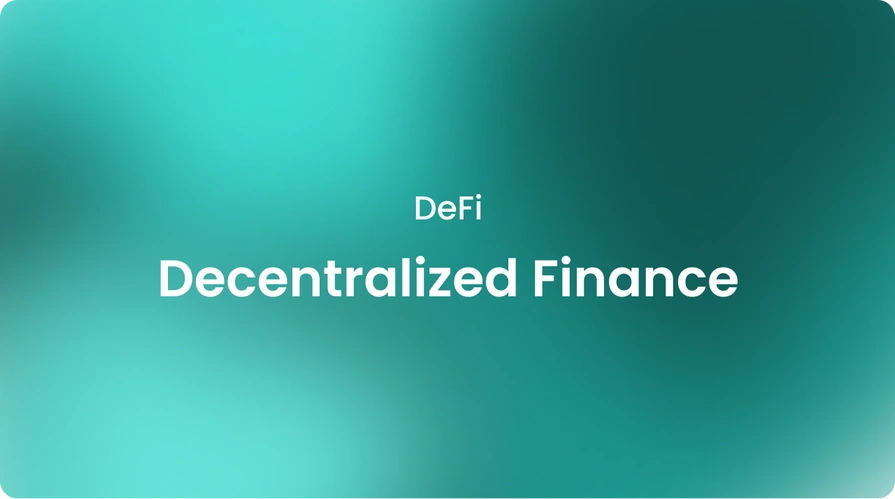|crypto, knowledgehub
What Is Yield Farming?

Yield farming has grown tremendously in popularity in the cryptocurrency space in recent years. But for those new to decentralized finance, or DeFi, the concept of yield farming can seem complex.
In traditional finance, people earn interest by lending or saving funds in a bank account. DeFi replicates this concept with cryptocurrencies through decentralized applications (dApps) like lending protocols, exchanges, and money markets.
These cryptocurrency protocols enable yield by automating interest payments through smart contracts. For example, when you deposit tokens into a lending protocol, the smart contract allocates those tokens to borrowers who pay interest. A portion of interest payments is then redistributed to lenders as yields.
Join us in this article as we explore the basics of yield farming, from its history to the difference between yield farming and liquidity mining. By the end of this guide, you will have a better understanding of decentralized finance and yield farming. Let’s start!
The history of yield farming
While the core concepts of yield and interest in cryptocurrency have existed for years, the term "yield farming" first emerged in 2020. At this time, new DeFi projects started incentivizing liquidity providers by offering outsized yields, often over 100% annually.
This sparked a phenomenon where yield farmers sought the highest returns by constantly migrating capital between protocols.
These supersaturated yields were unsustainable, but they helped bootstrap liquidity in DeFi and brought in many new users. Since then, as the sector matured, yields have declined overall, while the variety of yield-generating strategies has expanded greatly.
How does yield farming work?
Yield farmers can earn rewards in a few main ways: through liquidity provision, lending, and staking.
Let’s explore each way yield farming works:
How does yield farming work with staking?
Staking cryptocurrencies ensures proof-of-stake blockchains and decentralized organization governance. In return, stakers earn coin or token rewards based on their percentage of the network. Staking protocols automate this process.
How does yield farming work with lending?
Through lending protocols, lenders deposit crypto, which is then borrowed by others at a variable interest rate. Lenders earn interest on these crypto loans, taking advantage of the pool's increased activity over time.
How does yield farming work with liquidity pools?
Typically, liquidity providers earn crypto trading fees proportional to their share of a pooled liquidity position. By constantly swapping pairs of crypto tokens against each other, liquidity mining generates yield.
Common types of yield farming
- Liquidity mining involves providing paired tokens to automated market makers.
- Staking crypto coins validates transactions on proof-of-stake networks.
- Yield aggregators optimize rewards by shuffling funds between protocols.
- Generate passive income by utilizing services that automatically lend out assets.
- Governance token rewards for participating in protocol upgrades.
Benefits and risks of yield farming
While crypto yield farming opens up new opportunities for earning crypto returns, it is not without risks.
Some of the key pros and cons are:
Benefits
- High potential yields, some over 20% annually, depend on the strategy.
- Even small crypto holdings are accessible to retail investors.
- Strengthens the DeFi ecosystem by supplying liquidity for other users.
Risks
- Market risk as crypto prices are volatile and impact yields.
- When platforms have security vulnerabilities, smart contracts are at risk.
- An impermanent loss if the value of the supplied tokens diverges.
- Because crypto policies are still being developed, there is regulatory uncertainty.
- Decentralization trade-offs.
- Hyped projects.
- Over-leveraging.
Roles played by yield farmers
Within the yield farming economy, a variety of roles have emerged for focused yield farmer players. Liquidity providers supply assets, as previously stated.
There are also yield optimizers, or "harvesters," who manage strategies across multiple protocols to maximize returns. Infrastructure protocols underpin the systems, while governance tokens confer power to influence these layers.
What is harvest yield farming?
Harvest yield farming refers to strategies that aim to maximize returns on crypto assets by “farming” between multiple yield farming protocols.
For example, a protocol automatically transfers funds between yield farming protocols and others to ensure that they always earn the highest rates. These “harvester” protocols manage portfolios for farmers and take a portion of the improved yields as their fee.
What is APY in yield farming?
When considering any yield farming opportunity, it's important to understand the projected annual percentage yield, or APY. This indicates the estimated annual return one would receive if they kept their funds deposited and compounded earnings over a year.
APYs are typically higher than traditional finance's annual interest rates or APRs because DeFi yields are dynamic and pay out in additional coins rather than just dollars or euros.
Is yield farming profitable?
The profitability of yield farming is heavily dependent on individual circumstances and market conditions. During DeFi's growth phase in 2020, some farmers reported annual percentage yields (APYs) as high as 1000% when managing strategies across protocols.
However, as the space matures and more money enters DeFi, rates have fallen significantly. According to our data research, average APYs range from 5–15% on most vetted platforms. While still higher than traditional finance yields, proper risk management is key given the decentralization trade-offs.
Is yield farming worth it?
Individual circumstances and risk tolerance determine whether yield farming makes financial sense. While annual yields may seem attractive at first glance, one must remember that DeFi remains an experimental sector with many risks.
Impermanent losses, price volatility, and hacks are all real threats that could potentially outweigh promised rewards. For most, diversifying a small portion of holdings across reputable protocols is a reasonably cautious approach to exploring this burgeoning field.
What is the difference between yield farming and liquidity mining?
While often used interchangeably, there is an important technical distinction between yield farming and liquidity mining—two terms that both basically refer to strategies for earning rewards through DeFi.
Liquidity mining, in simple terms, refers to the initial incentive programs that protocols use to attract liquidity providers. To bootstrap liquidity, they offer new tokens at reduced rates.
There are a few core reasons why yield-based crypto farming has attracted so many participants:
- Higher yields
- Passive income
- Bull market gains
- New tokens
- Tech enthusiasm
The bottom line
Yield farming maximizes crypto returns by leveraging DeFi strategies such as lending, liquidity provision, and governance incentives. It enables anyone to generate yields that were previously exclusive to large institutions.
However, this new paradigm also comes with risks involving volatility, fluctuating rates, and potential protocol failures. Standards differ from traditional finance. If you need guidance in the world of blockchain technology, Cryptobunq is here to help with expert crypto services.
With Cryptobunq, you can benefit from crypto checkout and invoicing, tokenization, batch crypto payments, crypto exchange API, node as a service, custody and wallet, and more. By integrating our services into your business, you can leverage your projects.
If you want to learn more about our expertise in the world of blockchain technology and decentralization, make sure to check out our case studies. Contact us today and gain a prospective advantage over your competitors with secure crypto and blockchain solutions!













